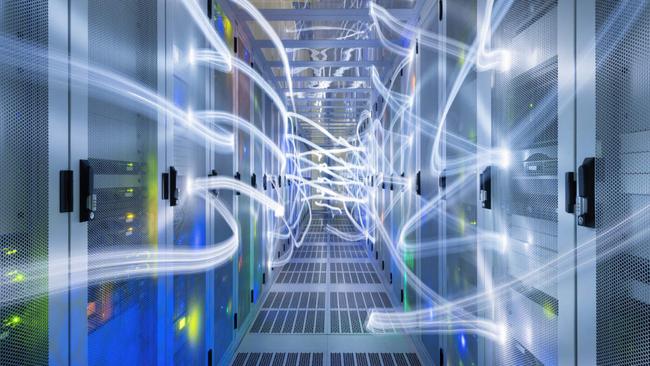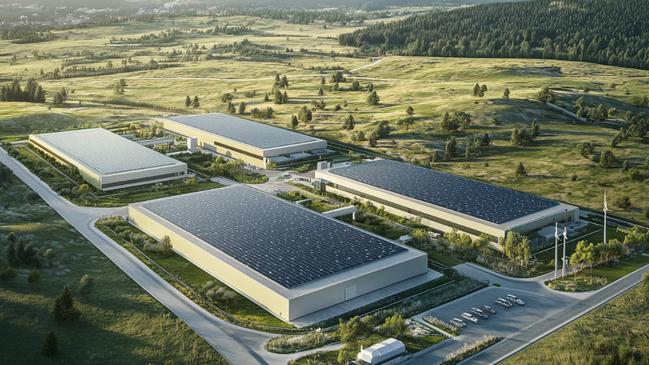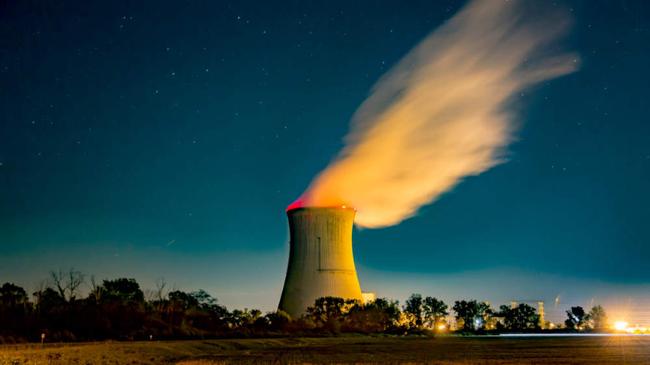Geothermal and nuclear are top energy picks for powering data centres
Geothermal and nuclear energy have emerged as the top choice to power Big Tech’s data centres. These ASX companies are on the case.

Stockhead
Don't miss out on the headlines from Stockhead. Followed categories will be added to My News.
AI data centres are power hungry, posing major ESG risks for tech companies
They are turning to reliable, low emissions geothermal and nuclear energy as a solution
These ASX companies are in line to benefit from Big Tech
Data centres – massive banks of networked computer servers with enormous processing and storage capacity – are seeing massive use due to how critical they are for artificial intelligence, touted in some circles as the next industrial revolution.
It is enough for technology giant Microsoft to project generative AI could add US$10 trillion to global GDP over the next 10 years.
However, data centres are also notoriously power hungry. It takes a lot of electricity to run all the servers and associated storage as well as the cooling systems required to keep them at their ideal operating temperature.
In Australia alone, they were found to account for 1% or about three terawatt hours of our annual electricity use according to a report from Mandala Partners. This pales in comparison to US data centres, which eat up 4% of all electricity used in the world’s largest economy, a figure AXA Investment Managers says could grow to 9.1% by 2030.
To noone’s surprise this has led to data centres catching a lot of flak for their impact on climate change. But Big Tech is also at the forefront of renewable energy adoption.
While wind and solar backed by batteries are amongst the solutions pursued by companies, Meta – the company behind Facebook – has partnered with Sage Geosystems to expand the use of geothermal energy to provide carbon-free power to its data centres whilst Google has reached a deal to use small reactors that use molten fluoride salt instead of water for cooling.
Nuclear power's resurgence in the United States has also been accelerated by the growth of the data centre industry, with Microsoft backing the restart of the Three Mile Island plant in Pennsylvania for that very purpose.

Ensuring data sovereignty
So just what is it about geothermal and nuclear that makes them so attractive to Big Tech?
“Power sovereignty is a big function of what the data centres need to be built around where they have uninterrupted power and obviously when it comes down to these centres, even by incorporating other green elements like wind and solar, you can’t guarantee that sovereignty as it is not immune to the sun or wind,” Earths Energy (ASX:EE1) chief executive officer Josh Puckridge said.
“Your cost lines (from gas and fossil fuels) aren’t there and the scarcity of that as we move from an age of delivering energy from fossil fuels – coal in particular.
“The overarching theme is power sovereignty that allows these data centres to claim they have data sovereignty, which is again the ability for them to operate immune from outside forces such as weather conditions, access to power, or even the cost of local power as they arise.”
Geothermal providing more than energy
Puckridge added that following a long period where there was little innovation, the geothermal sector entered a renaissance in 2018 and has seen significant R&D funding since.
“The applications for geothermal to be incorporated into modern grids and modern industry are escalating quite quickly and geothermal data centres fit them perfectly,” Puckridge said.
“Google has partnered with Fervo in Nevada, Meta has partnered with Sage, who offer a really pioneering Geopressured Geothermal System that essentially creates a geothermal well to operate like a battery.
“Microsoft and G42 have committed just over US$1bn to build quite a significant geothermally-powered data centre in Kenya.”
However, it is not all about power.
While the power used for actual computing tasks has now overtaken temperature control in data centres, the latter still uses a hefty amount of energy.
Geothermal technology offers a solution to reduce this power use.
“We can use the geothermal resource under the ground as a large heat sink where we are essentially tapping into aquifers of relatively large amounts of water, where we can circulate in hot water and pump out cooler water, and that avoids having active cooling elements that typically drain a lot of power,” Puckridge said.
EE1 is currently studying the use vapour absorption chillers, which produce chilled water using a heat source rather than electricity, as part of their internal scoping study into constructing geothermally-powered data centres at its strategically located Queensland tenure near Brisbane and the Gold Coast.
This will capitalise on the unique geothermal resources available at these sites, combined with proximity to major population centres to support the growing demand for sustainable and cost-effective data centre infrastructure.
Being able to use direct geothermal cooling will also minimise the need for energy-intensive refrigeration systems, significantly lowering electricity usage and associated costs.

Nuclear gets the call up
While geothermal is certainly one of the key choices for Big Tech to power their data centres, it can’t be used everywhere and that is where nuclear energy steps in.
GTI Energy (ASX:GTR) executive director Bruce Lane said the key drivers attracting the ‘Magnificent 7’ – Alphabet (Google), Amazon, Apple, Meta, Microsoft, NVIDIA and Tesla – to nuclear is its reliability, low emissions, low cost over the long life of plants, low ecological impact and strong safety records.
“The data centre players have experimented with carbon credits and renewables but it seems clear they are not the answer hence the recent nuclear deals from Microsoft, Amazon, Google et al,” he told Stockhead.
He added that the incoming Trump Administration would likely look at pragmatic ways to incentivise the nuclear power industry, and potentially even the data centre companies directly, to invest in new nuclear power generation capacity.
“I am very optimistic and I think that the industry will be well supported to grow as fast as possible. Trump’s recent rhetoric and the industry drivers, particularly data centre and AI-driven electricity demand, point to a bullish future for nuclear power and uranium.”
Uranium miners to benefit
Lane added that should the US Department of Energy achieve its recently stated goal of an additional 35GW of nuclear within the next 10 years, it would increase demand by a further 17Mlbs of uranium oxide over and above the current 50Mlbpa for the US reactor fleet.
“All this bodes well for US uranium miners, developers and explorers,” he said.
“The global uranium market has been bifurcated between the east and west due to the Ukraine conflict and a US ban on Russian nuclear fuel imports.
“This then begs the question as to where the US will get the additional 100Mlb of uranium needed annually by 2050 to triple its nuclear power supply. 67Mlb of uranium or thereabouts will needed every year by 2035 just to support the additional 35 gigawatts of nuclear planned by 2035.
“At least some of this uranium is highly likely to come from US domestic uranium mining.”
That cohort includes Lane’s own GTR, which is on track to update the resource estimate and exploration target for its Lo Herma project in Wyoming’s Powder River Basin before the end of 2024.
Lo Herma currently has an inferred resource of 5.7Mlb U3O8 at an average grade of 630 parts per million and the exploration target of 5-10Mb U3O8 with a grade range 570-670ppm.
It is also increasing the project footprint by around 440 acres to the north and south of Section 4, extending the mineralised trends at Lo Herma by ~1.6km and expects to complete its 2024 drill program in December with the drilling of three hydrogeologic and water-monitoring wells.
The updated resource, along with hydrogeology data and metallurgical testing results, is expected to feed into a potential scoping study for the first half of 2025.
Recharge Metals (ASX:REC) also has its eyes on the prize with its recent acquisition of the advanced Carter project in a proven in situ recovery uranium producing region in Montana.
Sitting just 60km north of fellow Australian company Peninsula Energy's (ASX:PEN) 58Mlb Lance in situ recovery operation, Carter covers 87% of the surface expression of the 3.7Mlb at 1250 parts per million eU3O8 Acadia deposit and 78% of the 1.4Mlb at 1560ppm eU3O8 Mindy deposit. Those resource estimates, it should be noted are not JORC 2012 compliant and will require validation for reporting to Australian standards.
Historical drilling within the project area returned high-grade hits such as 1.83m grading 5400ppm eU3O8 from 438m and 3.35m at 2000ppm eU3O8 from 430m.
There is also considerable potential for REC to grow resources as multiple additional roll fronts, which host uranium mineralisation in the region, have been mapped within the Carter project.
At Stockhead, we tell it like it is. While Earths Energy, GTI Energy and Recharge Metals are Stockhead advertisers, they did not sponsor this article.
Originally published as Geothermal and nuclear are top energy picks for powering data centres


